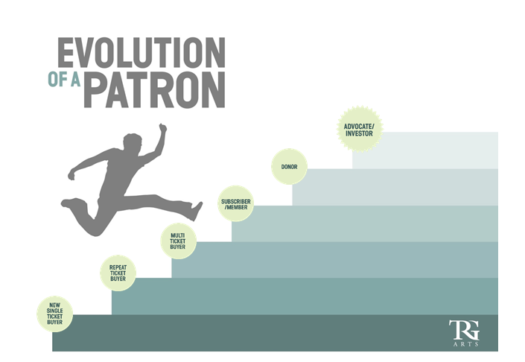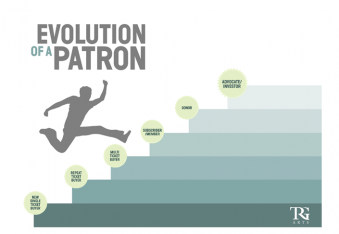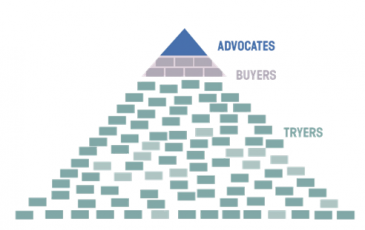The Making of a Donor Ready Patron: Live from #BBCON

Blackbaud hosted its annual conference for nonprofits from September 29 through October 1 in National Harbor, MD. Nonprofit experts from around the country presented best practices to over 2000 attendees.
Intuitively we know that donors don’t magically appear at our door step. We know that effective fundraising campaigns take time and involve personalized messages based on the constituent’s interests. But the “how” part of this escapes many nonprofits. In her session, The Donor Ready Patron, Jill Robinson, President of TRG Arts tackles the science behind engaging constituents in a way that makes them donors. As the presentation kicks off, Jill noted that she uses the word “patron” to refer to anyone engaged with a nonprofit organization, whether it’s a visitor, member, or event attendee. This blog post will use the same rule.
Jill opened her presentation with a question: “Who makes a constituent donor ready?” The answer is simple, “You do.” TRG Arts has done two decades worth of research and has found over and over again that loyal donors are not found, they are made.
For arts organizations, patron loyalty is a measure of the patron’s investment in your organization; the stronger the connection with your patrons, the more revenue for your organization. So how do you increase patron loyalty? The answer is by upgrading them.

Jill described the evolution of a patron, which identifies the stages of your relationship with a patron from the time they first purchase a ticket until they become an advocate for your organization. The beauty of this model is the simplicity it allows in your solicitation. No longer are you trying to turn a first time visitor into a donor. Instead, you are simply trying to turn that first time visitor into a repeat ticket buyer. It also identifies that people do not start at the advocate stage because they have to be nurtured to that point. This knowledge allows you to customize your message and interactions with your constituents depending on where they are in their relationship with your organization.
Another way of looking at this evolution is through the Tryer, Buyer, Advocate mode that TRG uses.
- Tryers are the people who are engaging with your organization at a basic level. They are your single ticket purchasers or single event attendees and are least engaged with your organization. There are the most people in this stage because according to TRG’s research, 4 out of 5 tryers will come to your organization and never come back.
- When someone become a Buyer, they are introduced to the power of “and.” These people visited AND signed up for a membership. Or maybe the visited AND signed up for a special class. To go from a Tryer to a Buyer you need someone to take a second action and further engage with your organization.
- Advocates are your donors and evangelists. You have engaged these buyers to the point that they are donor ready.

How do you know what stage any given constituent is in? You have to rely on data. Jill recommends an integrated database that allows your organization insight into a constituent’s interaction with every department of your organization. Without an integrated database you run the risk of each department viewing and treating a constituent differently based on their perceptions or, even worse, competing with each other for a constituent’s dollars.
Check out the slides from the presentation.
TRG Arts was founded in 1995 and has grown on pioneering strategies in pricing and loyalty that today have become proven in the results their clients achieve. TRG Arts is based in Colorado Springs, Colorado with 35 team members, each focused on providing guidance and solutions that are patron-based for sustainable loyalty of patrons and sustainable revenue from those patrons.
